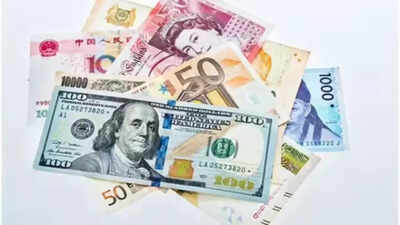Forex kitty update: Reserves drop $3.06 billion to $696.67 billion; second weekly decline in a row

India’s foreign exchange reserves fell by $3.06 billion to $696.67 billion for the week ended July 11, marking the second consecutive weekly decline, according to data released by the Reserve Bank of India (RBI).The forex kitty had previously decreased by $3.049 billion to $699.736 billion in the week ending July 4.For the week ending July 11, the foreign currency assets, a primary component of forex reserves, reduced by $2.477 billion to $588.81 billion, contributing significantly to the overall decline.The Gold reserves experienced a considerable reduction of $498 million, settling at $84.348 billion.During the reporting week of July 11, the country’s Special Drawing Rights (SDRs) with the IMF decreased by $66 million to $18.802 billion, according to RBI data.The data also showed a reduction of $24 million in the Reserve Position at the IMF.Central banks globally are increasing their holdings of gold as a secure asset in their foreign exchange reserves, including India.The RBI’s gold proportion within its foreign exchange reserves has seen a twofold increase since 2021 until recent times.India enhanced its foreign exchange reserves by approximately $58 billion in 2023, contrasting with a total reduction of $71 billion in 2022.The reserves increased by over $20 billion in 2024, achieving a record high of $704.885 billion by the end of September 2024.India’s foreign exchange reserves can cover 11 months of imports and approximately 96 per cent of external debt, according to Governor Sanjay Malhotra’s statement during the Monetary Policy Committee (MPC) meeting announcement.The governor conveyed optimism about India’s external sector, noting its resilience and the improvement in key external sector vulnerability indicators.Foreign exchange reserves, managed by a country’s central bank, mainly consist of reserve currencies—primarily the US Dollar, along with smaller amounts of the Euro, Japanese Yen, and Pound Sterling.(With ANI inputs)





